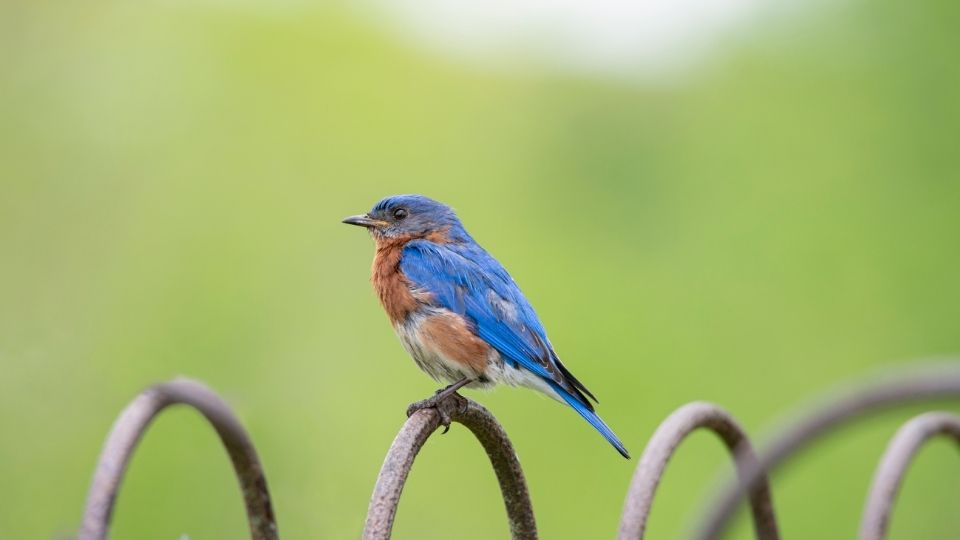During the warm summer months, Western Bluebirds eat almost exclusively insects when insects are abundant. They favor ground-dwelling insects like grasshoppers, caterpillars, beetles, ants, wasps, and isopods. Bluebirds bring their babies an array of spiders, caterpillars, grasshoppers, mealworms, and beetles crushed for easy digestion. Sometimes, they will even bring berries.
What do Western Bluebirds eat?
The Western Bluebird diet varies by season. During the warm summer months, they eat almost exclusively insects when insects are abundant. They favor ground-dwelling insects like grasshoppers, caterpillars, beetles, ants, wasps, and isopods.
Western Bluebirds can also be seen catching spiders and snails.
This love of insects makes them perfect for clearing out garden pests if you’re lucky enough to attract them to your yard.
Winter foods are primarily berries, including grapes, raspberries, blackberries, dewberries, elderberry, and chokecherries.
During the winter, Western Bluebirds will supplement their diet with as many bugs as they can find, but they rely on berries to get them through the winter.
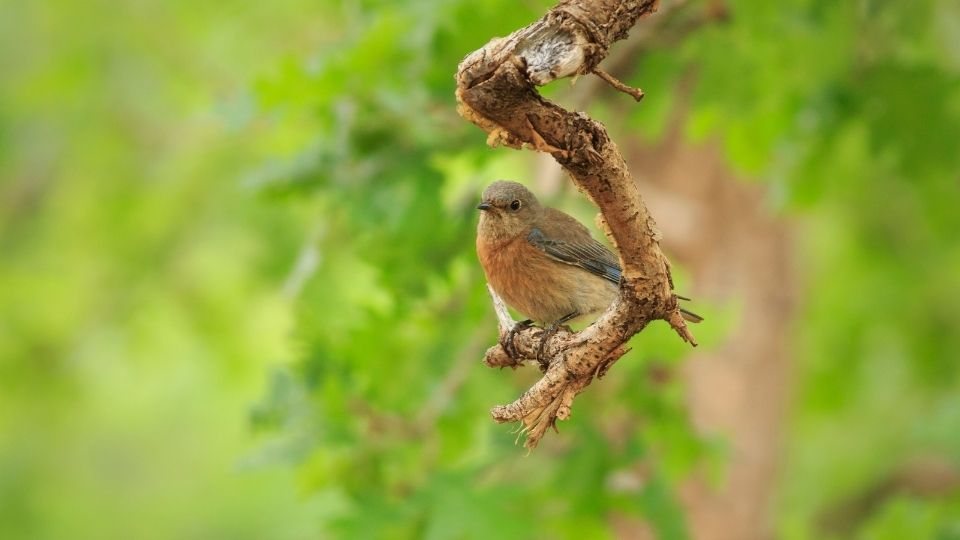
Where do Western Bluebirds live?
Where the Western Bluebird lives depend primarily on what part of their range zone they were born in.
Western Bluebirds live in North America, west of the Rocky Mountains. They range from Mexico to British Columbia, Canada. Western Bluebirds are permanent residents in warmer climates, remaining in the breeding territories year-round. Other Western Bluebirds may move to more hospitable areas by October and return to their breeding territory by March.
Western Bluebirds that live in higher elevations as far north as British Columbia will fly to a lower elevation during the winter and return just before the mating season in March.
Watch our video and discover how to attract and what to feed feed bluebirds!
What is the Western Bluebird’s habitat like?
Western Bluebirds are found in open woodland areas and at the edge of heavily wooded areas. They do not like wide-open spaces, which is why housing developments and grazing areas don’t see a lot of Western Bluebirds.
Forests filled with evergreen, deciduous trees are a great place to look for Western Bluebirds, as they favor ponderosa pine and aspen stands. Conifer forests are also an ideal habitat for Bluebirds, offering plenty of nest cavities to build their home.
They also thrive in burned areas and areas that have been logged with dead trees left behind. In both cases, dead trees provide a suitable place to build their nests.
Since tree-cavity nesting sites are a valuable resource to these shy birds, they are often run out by swallows, house wrens, and nuthatches. If humans come into a habitat to clean it up, it further depletes the number of natural cavities in which Bluebirds can build their nests.
Providing nest boxes can help the Western Bluebird thrive and counteract some of the challenges Bluebirds face competing with other bird species for nest cavities.
What kind of habitat do Western Bluebirds prefer?
Western Bluebirds love wooded areas, especially those with branches low to the ground. They can also be seen perching on fence posts and signs.
Since they build their nests in secondary cavities, they rely on natural cavities and cannot create their own. Up to 77% of western Bluebird nests are found in woodpecker holes. The rest are built anywhere a tight chamber is created by natural forces like fallen limbs or by humans.
When flying, Western Bluebirds stay low to the ground to hunt. They have excellent eyesight and forage by scanning the ground from a perch, then swooping down abruptly to catch their prize.
Outside of the breeding season, Western Bluebirds are very social. Once their Bluebird chicks have left the family in the fall, Bluebirds will form flocks of up to 100 songbirds.
Western Bluebirds will flock with American robins, yellow-rumped warblers, and even mountain Bluebirds that occasionally end up on the edges of the Western Bluebird range.
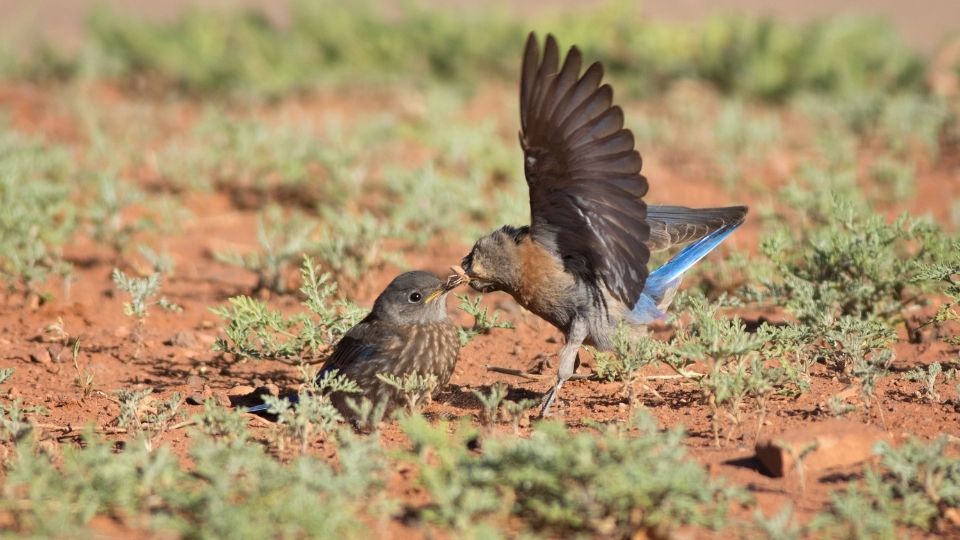
What do baby Bluebirds eat?
In all three Bluebird species, the female is the primary caregiver, especially in the earliest days of a hatchling’s life. From sunrise to sunset, Bluebirds bring their babies an array of spiders, caterpillars, grasshoppers, mealworms, and beetles crushed for easy digestion. Sometimes, they will even bring berries.
Bluebird nestlings need to eat every 20 minutes during daylight hours. During this time, both parents will remove the fecal sacs and work to keep the nest clean.
While the female is busy caring for the young nestlings, the male watches for predators and occasionally presents his mate with food.
Once the babies have feathers and open their eyes, they are fledglings and getting closer to leaving the nest. Since fledglings can handle a large variety of foods without much preparation and assistance, the adult male will start bringing food to them.
Fledglings eat less often, but even with the two-hour interval between feedings, both parents work hard to bring enough food for the two to seven growing baby birds in each brood!
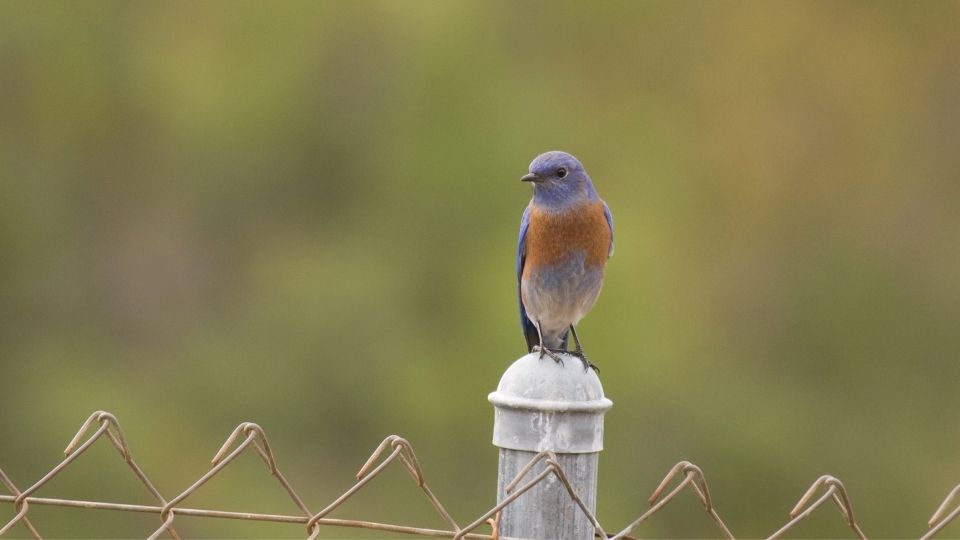
What is the difference between Western and Eastern Bluebirds?
Western and Eastern Bluebirds look identical. Bluebirds are migratory, but they don’t migrate beyond their range boundary. Because of this they are easily identified by their location.
Western Bluebirds live west of the Rocky Mountains. They range from Mexico up into Canada.
Eastern Bluebirds live east of the Rockies. They can be found as far south as Honduras and as far north as the lower part of Canada.
Of the three Bluebird species, Eastern Bluebirds range the farthest south, but their northern range is also the lowest.
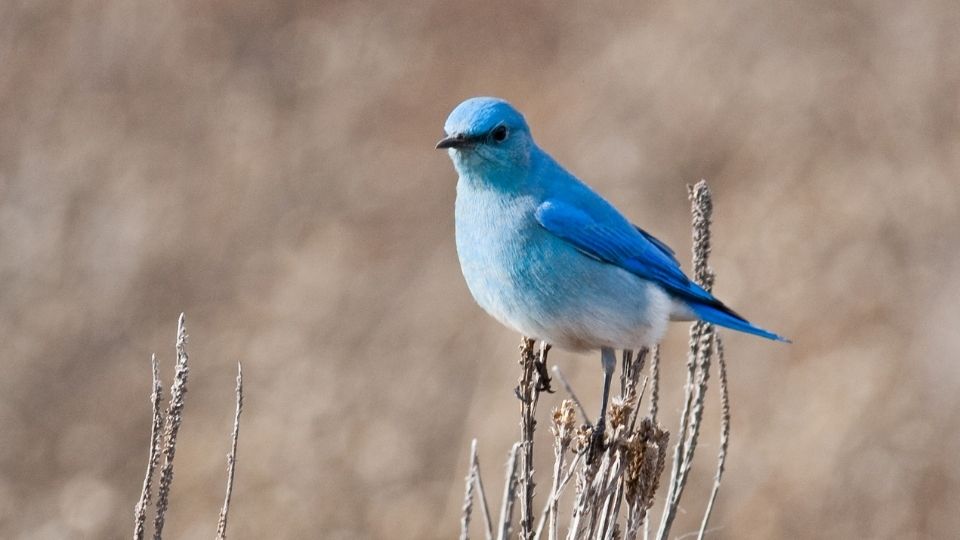
What’s the difference between a Western Bluebird and a Mountain Bluebird?
Mountain Bluebirds live in exclusively in the Rocky Mountains and range up to Alaska. Like the Western and Eastern Bluebirds, they also range into Mexico. Of the three Bluebird species, they range the farthest north by far.
Mountain Bluebirds are not as vibrant as the western Bluebird and it is more difficult to tell males and females apart, but not impossible.
Instead of the orange chest present in both the Eastern and Western Bluebirds, mountain Bluebird males have pale blue chests and bellies.
The female mountain Bluebird has pale blue wings and head, but the blue is much lighter than her male counterpart. The brightest blue feathers are concentrated on her eye ridge, the tips of her wings and the sides of her tail. The rest of the female mountain Bluebird’s body is gray.
Mountain Bluebirds are also day migrators. They will come down the mountain slopes in search of warmer weather, flying back to their roosts in the evenings.
Check our video to find out all about the way bluebirds nest and lay eggs!
What are the different colors of Western Bluebirds?
Western Bluebirds have the same coloration as Eastern Bluebirds. The male western Bluebird has vibrant blue heads and wings, with an orange chest and white belly.
Females also have blue heads and wings, though the color is such a pale blue they appear almost gray. They also have fewer blue feathers on their tails, and the orange on their chest is lighter.
Like Eastern Bluebirds, telling the difference between an adult male and female Western Bluebirds is relatively simple.
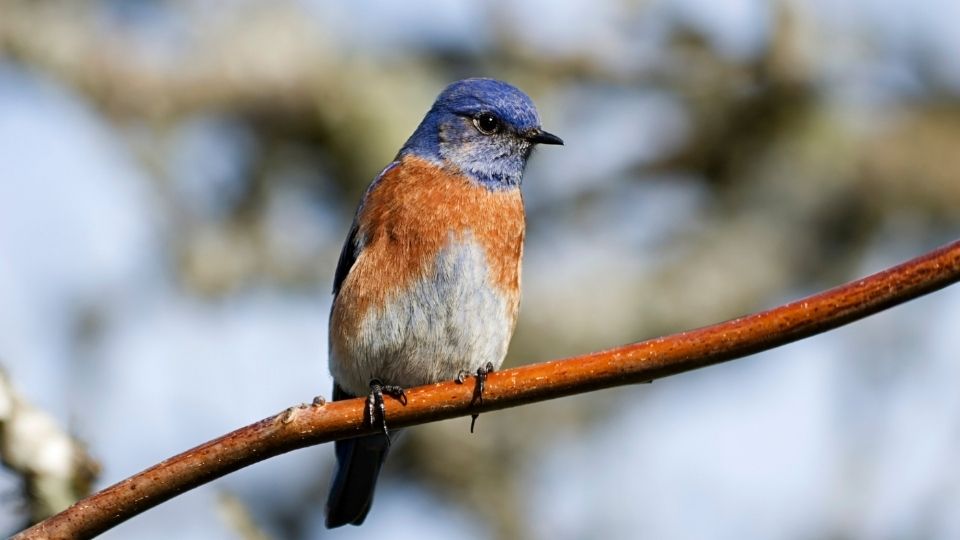
Are Western Bluebirds endangered?
While Western Bluebirds struggle with habitat loss and other challenges many songbirds face, they are not endangered. Their conservation status is listed as of “least concern, ” meaning there is little to no chance of them becoming endangered.
Bluebird populations have been stable and rising since 1966. However, their lifespan is significantly impacted by extensive logging and growth from fire suppression.
Since Bluebirds prefer wooded areas to open land, housing developments and grazing land also impact their habitat. Even in heavily wooded habitats ideal for Bluebird mating, people remove dead trees and debris to clean up forests and green spaces. Bluebirds are cavity nesters, so these human efforts–while well-intentioned–make it more difficult for Bluebirds to build their nests.
Western Bluebirds are thriving despite all these roadblocks and a high mortality rate in the first year of life.

